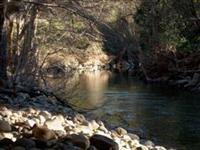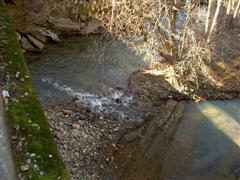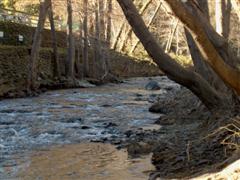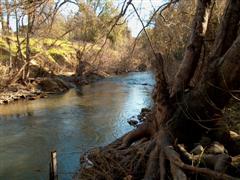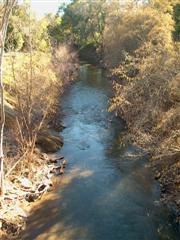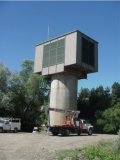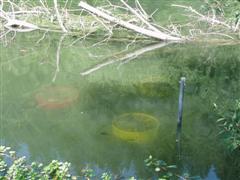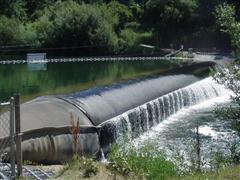California Water Science Center
|
Skip navigation to main content.
|
Study Photos Click on a picture to enlarge it. Some images are large and you may see a red x until image fully loads. Confluence of Sonoma Creek (left) and Calabazas Creek (right) in Glen Ellen, CA. Taken on January 23, 2002 by M.H. Cox. Sonoma Creek above confluence with Calabazas Creek in Glen Ellen, CA. Taken on January 23, 2002 by M.H. Cox. Sonoma Creek at USGS gaging station (11458500) at Agua Caliente, CA. Taken on January 23, 2002 by M.H. Cox. Sonoma Creek looking downstream of USGS gaging station (11458500) at Agua Caliente,CA. Taken on January 23, 2002 by M.H. Cox. Sonoma County Water Agency collector well along Russian River near Wholer Bridge. The water agency operates five similar wells on the Russian River. All use the Raney design with laterals extending beneath the river bed in a radial pattern from the main caisson. Each of these wells are capable of producing between 15 and 20 million gallons of water per day. The river water is naturally filtered as it moves through the river bed sediments to the collector wells. Photo taken June 18, 2002 by C.D. Farrar. Seepage meters (yellow and orange cylinders under water) placed on river bed sediment in Russian River near Wholer Bridge. Seepage meters measure the quantity of water moving into or out of the river through the streambed sediments. Such measurements help quantify ground water/surface water interchange. Photo taken June 18, 2002 by C.D. Farrar. Russian River upstream of Wholer Bridge. An inflatable rubber dam located about 1 km downstream (out of view) is used seasonally by Sonoma County Water Agency to raise the stage by 3 meters along this reach of the Russian River. Raising the river stage allows higher pumping rates in the nearby collector wells that supply much of Sonoma County's potable water. Photo taken June 18, 2002 by C.D. Farrar. Inflatable rubber dam on Russian River below Wholer bridge. The dam is inflated seasonally (late spring to late autumn) to raise the river stage by 3 meters. The higher stage allows greater pumping rates to be maintained in the collector wells that supply water to Sonoma County residents. Fish ladders provide passage for fish to move upstream around the dam. Photo taken June 18, 2002 by C.D. Farrar. Infiltration pond next to Russian River and Sonoma County Water Agency's collector wells near Wholer. The ponds are used to increase the head in sediments overlaying the collector laterals which allows higher rates of pumping. Photo taken June 18, 2002, by C.D. Farrar. Seepage meter methods determine the variability of ground-water discharge and recharge at specific locations in the streambed which provides local-scale streambed heterogeneity. This method uses an open-ended drum pushed into the streambed to measures the amount of water that is lost or gained in the bag connected to the seepage meter over time.
|

